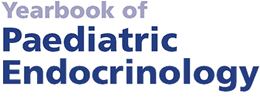ESPEYB18 15. Editors’ Choice (1) (16 abstracts)
15.1. Analysis of overlapping genetic association in type 1 and type 2 diabetes
Jamie RJ Inshaw , Carlo Sidore , Francesco Cucca , M Irina Stefana , Daniel JM Crouch , Mark I McCarthy , Anubha Mahajan & John A Todd
Diabetologia. 2021 Jun;64(6):1342–1347. 10.1007/s00125-021-05428-0. https://pubmed.ncbi.nlm.nih.gov/33830302/
By studying data from very large-scale genome-wide association studies (GWAS) in European ancestry individuals, the authors compared genetic signals that confer risk of type 1 (T1DM) and type 2 diabetes (T2DM). Only 5 signals were associated with both T1DM and T2DM (‘colocalised signals’). At 4 of these signals, variants that increased risk of T1DM decreased the risk of T2DM: (1) chromosome 16q23.1, near the CTRB1/BCAR1 genes; (2) 11p15.5, near Insulin and IGF2; (3) 4p16.3, near TMEM129 and (4) 1p31.3, near PGM1. Only one signal showed directionally concordant effects, increasing the risks of both T1DM and T2DM: 9p24.2, near GLIS3.
It is remarkable that, despite the knowledge of ~60 genomic regions associated with T1DM and >200 associated with T2DM, there is so little overlap in the genetic risk factors for these two forms of diabetes. Some have hoped that established treatments for T2DM (e.g. metformin) might also have obvious benefits for patients with T1DM. It was even hypothesised that both forms of diabetes shared a common genetic make-up but were exposed to different in utero and postnatal environments. With that in mind, it seems even more striking that, of the handful of cases of genetic overlap identified, most of the risk variants have directionally opposing effects on T1DM and T2DM. These findings suggest that biological studies of one condition could still shed some insights onto the other. However and unfortunately, the findings cast doubt on the effectiveness of developing common treatments that would benefit both diseases.



